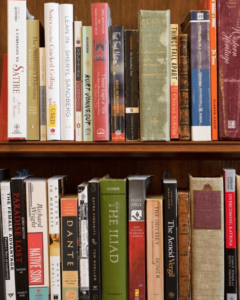by Andrea Traietti on March 5, 2020
Opinion

by Julia McCoy ’20
Opinion Staff
Providence College was once an all-male college. Luckily, the statistics today reflect a nearly split population of young men and women. But has our curriculum changed to fit the times?
Anyone that tours PC will soon know what course students consider the most important—the Development of Western Civilization. A staple in our coursework for the first four semesters of college, DWC is meant to teach us the most important aspects of western civilization from the beginning of recorded history until now.
When covering the defining moments of our history as humankind, it is important to ask: where are the women? The history that we prioritize is not particularly inclined to be inclusive of women in the arts or sciences. As a result, there is a significant drought in female writing and thought in this course.
Though DWC certainly does a good job of comprehensively covering the entire history from ancient to modern times in four semesters, a diversity in the gender of our authors and key figures would certainly be a beneficial change to the program. Prioritizing a variety of perspectives has certainly been a talking point over the last few years, and it should continue to develop until all people are represented in the DWC syllabus.
Certain professors and DWC teams have made strides in terms of diversifying the perspectives they include in their DWC syllabi, but not all share this experience.
Regarding how she constructs her own syllabi and conversations, Dr. Jennifer Illuzi said, “When we start asking the right questions, it’s not a matter of ‘including’ women’s voices, or Black voices, but of doing justice to the complexity of the concept of ‘western’ and how that came to be a category of identification that seems meaningful.”
She added, “We’re also spinning out the history of how stories have been told and for whose benefit and at whose expense, and how voices of dissent and critique often are drowned out in the service of capitalism, patriarchy, and white supremacy. You cannot do that well without a plethora of voices and points of view.”
While there might not be a need yet to enforce strict requirements or some kind of quota of female writers, it is definitely time to consider the meaningful questions raised by Dr. Illuzzi. To tell the full story, we need diverse perspectives, including those of women.
After all, female writers have been influential throughout history. Where would we be without Marie de France, Jane Austen, Mary Shelley, Virginia Woolf, and Toni Morrison, to name just a few? Their work is certainly pivotal to any DWC curriculum, and should be focused on with care, since it is less common than the work or thoughts of a man.
The evolution of gender equality and inclusion throughout our history is equally as incredible. Even in the College’s own history, there have been many revolutionary changes that shaped the population of our beloved campus community. Embracing female scholarship is worthwhile because it allows us to understand each other in new ways.
One way for this to happen would be through new course offerings. Perhaps slightly different from a course in the women and gender studies department, PC could consider expanding its colloquia options to include more classes that focus specifically on women. These classes could provide students with a wide variety of perspectives, coming from all genders, races, and other identities.
Especially considering the lack of female literature and thought in the DWC program, there is a dominant male gaze throughout the core curriculum here at PC. What better way to challenge that norm than with new Civ classes centered on embracing not only the differences in gender-based writings, but also the similarities that people share.
Though we, as a community, have made steps to become more inclusive over the years, there is always room for improvement. It is important, especially in the political climate surrounding the Time’s Up and #MeToo movements, that the students on this campus are educated about the plight of people whose perspective they are not privy to.
This certainly starts in the classroom. When learning about famous events throughout history, ask where the women were. What did they think? Because they certainly had things to say, and they still do.